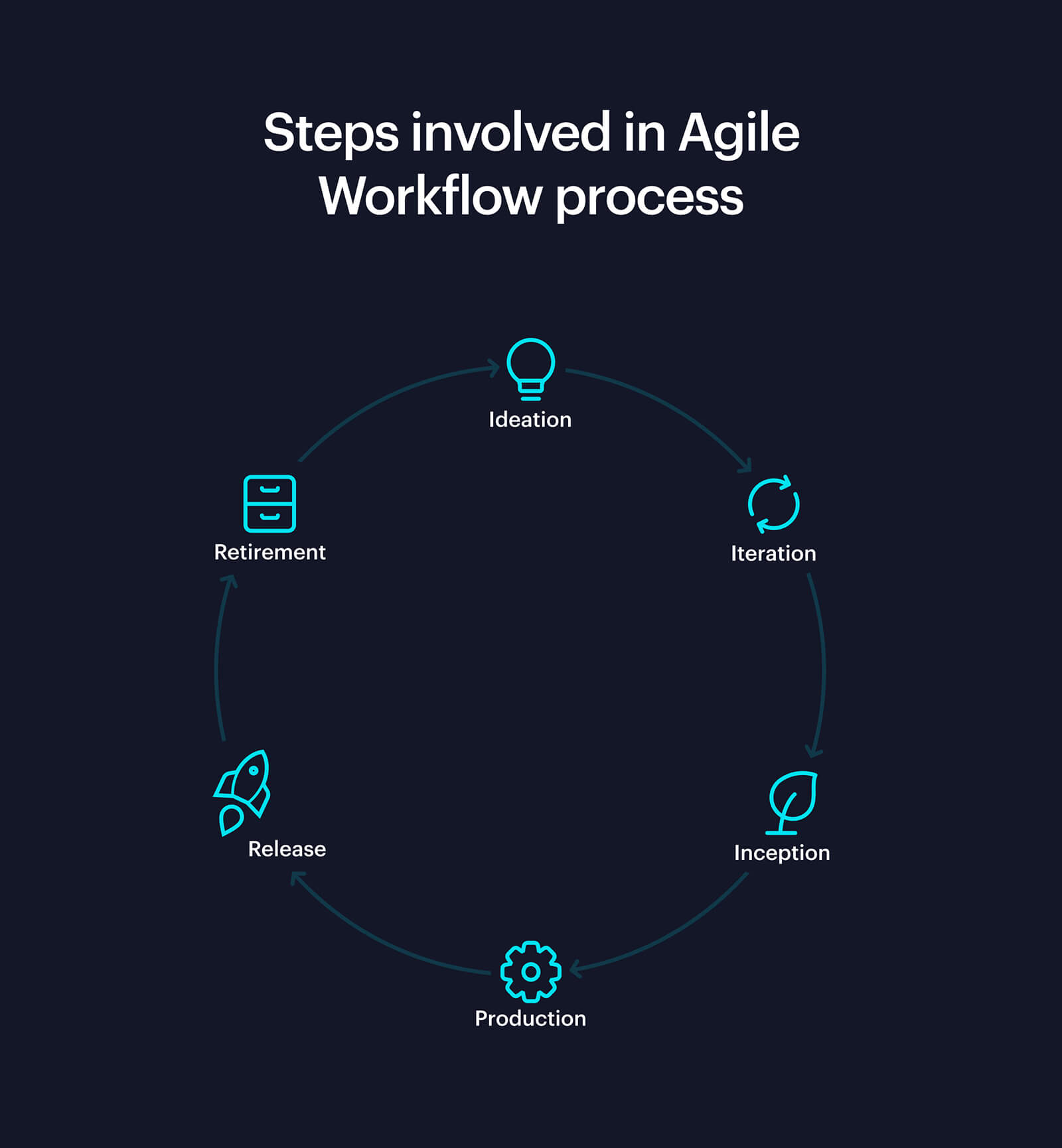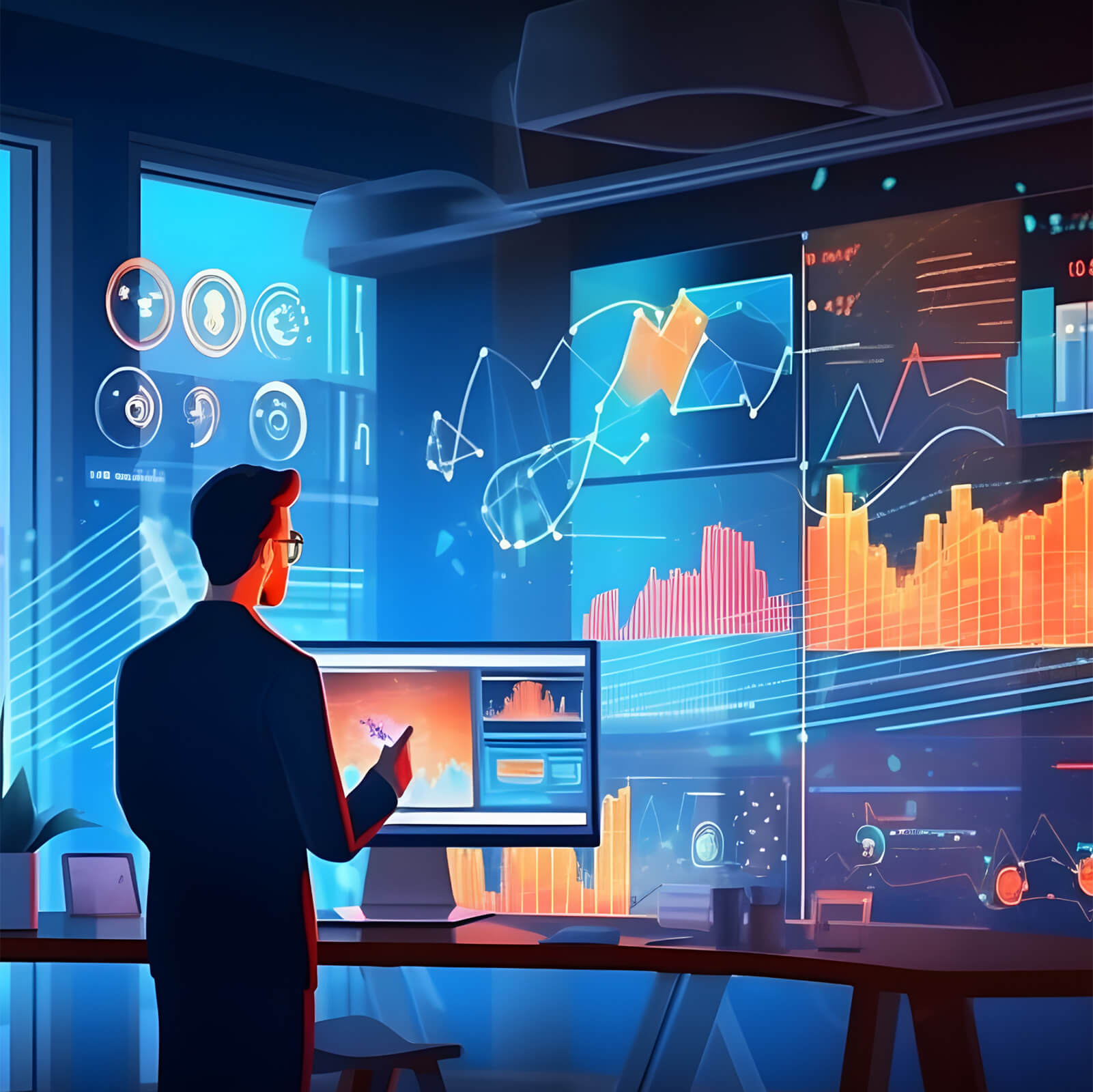Agile vs waterfall – Which methodology suits you?

While organizations use a range of approaches to software development or completing tasks, Agile and Waterfall are two distinctive and popular models used widely. While the Agile model is an iterative methodology that involves a cyclic and continuous process, the Waterfall model is a sequential methodology that handles tasks in a linear fashion. While both of the models are very popular among software development teams, they both suit different purposes. Let’s get a deeper look at the Agile vs Waterfall model.
What is the agile model?
The Agile methodology of software development is an iterative approach to delivering a project with continuous releases based on customer feedback. The Agile model has incredible flexibility to adapt to each user iteration or change, increasing the velocity and adaptability of the project. With fast-changing customer needs and businesses looking to provide rapid responses to them, the Agile methodology delivers the flexibility to adjust and iterate during the entire software development process. The Agile philosophy paves the way for DevOps practices, fostering collaboration between the development and operational teams. The popularity of Agile is now high, spreading its roots beyond just development, and impacting marketing, IT, business development teams, and more.
The agile workflow
The Agile methodology consists of completing intricate projects by breaking down the approach into short cycles known as sprints. At the end of each sprint, the customer or the shareholder shares feedback, which the development team includes in the next sprint. This workflow approach helps the developers spot and fix mistakes or make better features in a timely manner. The Agile methodology increases the efficiency of the project and guarantees that the team meets the customers’ or stakeholders’ demands.
The Agile workflow includes a series of steps, which usually remain the same irrespective of the project:

Ideation
Before beginning the project, the teams must conceptualize, envision, and plan the project’s run. This is the stage where the software development teams define the scope of each idea, design the product backlog, and outline the sprints.
Inception
Once the project team determines the viability of the idea, they create sprint teams and assign them particular tasks, with a set of goals and deadlines by when to conclude them. At this stage, the business usually allocates funding and resources to the team.
Iteration
Once the teams set the project requirements and working environments, the sprint teams now get into action. The team begins work on the first iteration and clears the product task list.
Release
Once the iteration is complete, the software development team releases the product to customers or the shareholders for them to review. The unit incorporates its feedback into the software development and tests it before the next sprint. The quality analytics team then tests the functionality of the product and reports issues that the development teams have to fix before the next release.
Production
Once the team completes the testing and documentation procedures, the product goes into production. Now, the unit focuses on ensuring the successful launch of the project and provides ample support for its release.
Retirement
The Agile methodology workflow ends with the retirement of the project. The stage also includes notifying the customer about the new software or upgrades.
What is the waterfall model?
The Waterfall methodology of project management follows a clearly defined sequence of executing a project where the teams do not advance to the next phase unless the present one gets approved. Once the team completes a stage, reverting to it is costly and tiresome. The Waterfall model follows a linear, sequential approach that works best for predictable and systematic processes.
The waterfall workflow
The Waterfall workflow breaks down each phase and completes them in sequential order, thus deriving its name from the flow of a waterfall. The team wraps up each phase before stepping onto the next. The success of the model relies on the research and effort put into the front end and documentation, including user stories and user interface. Hence, the model gives more accurate results.
The key stages in the model are:
Requirements
The key to a successful waterfall model relies on collecting and understanding all the project requirements upfront. The project manager/business analyst does their best to understand the requirements of the client. The manager then documents all the needs and describes all stages of the project, including the cost estimates, risks, dependencies, success metrics, and timeline.
Design
The software engineering team sits with the Business Analyst team and Project management team to design solutions to satisfy the project requirements, encompassing various scenarios, layouts, and data models, and finally shares a Business Requirements Document (BRD) and sometimes an Architectural document that defines the infrastructure. The high-end design describes the purpose and scope of the project, integration points, and the workflow of the solution. The User Interface (UI) screens are also designed at this stage.
Development
The team begins with technical application development once the design phase is complete. The coders develop the application according to the given requirements and specifications. Development is the longest phase of the Waterfall methodology. If the client wants to make significant changes, they have to revert back to the design phase which will run through the above cycle once again along with a change in the timelines and budget.
Testing
Before the team releases the product to the public, they make sure that the solution is bug-free and caters to all the client’s requirements. The testing team creates various test cases based on the design documents, personas, and use cases that the project manager supplies.
Deployment and maintenance
Once the software is deployed in the client’s preferred infrastructure, the maintenance stage commences. The team collects and understands the defects or the customer feedback and assigns a team to work on the upgrades and launch a new version of the software.
Comparison between the models
We can compare the Agile vs Waterfall model based on a few criteria:
Resource allocation
One key difference between Agile and Waterfall methodologies is how resources are allocated. In the Waterfall model, the project manager understands the problems, does the needed research, and allocates resources upfront. There is no going back once the team completes the initial stage and begins with the project implementation. The project manager then assigns tasks to the developers. Meanwhile, in the Agile model, the project managers split the developers into groups known as the agile teams or scrum teams and prioritize the work according to the business stakeholders or the client’s needs. The project manager then assigns the tasks to teams instead of individuals.
Budget
The budget plays a crucial role in the battle of Agile vs Waterfall. As the Waterfall methodology determines the entire progression of the project upfront, there is less scope for change at the mid-way stages, resulting in a fixed budget. Meanwhile, the Agile methodology has an extremely flexible budget as it encourages experimentation and welcomes changes, and makes your application better as development happens.
Flexibility
As the Waterfall methodology doesn’t let teams proceed to the next step before they complete the present one, the model lacks the flexibility that the Agile method offers. They also plan the project upfront, giving the management clear visibility about its life cycle. On the other hand, the Agile methodology fosters flexibility. It breaks down the work into shorter forms known as sprints, which allows for taking new directions and implementing changes even at later stages.
Timeline
The Waterfall methodology has a fixed timeline as the project managers map the project’s lifecycle at the ideation stage with extreme clarity. As the Agile model takes different directions and changes as the project progress, so do its timeline.
Agile vs waterfall: Which to choose?
For your business, you must consider various factors before choosing between the Agile and Waterfall models. Opt for the Agile model if your project demands high flexibility or you have uncertainties about the requirements. With Agile, you can learn more about the project as it progresses. However, you should go for the Waterfall model if you are planning a project with well-defined requirements.
Still, confused about opting between Agile or the Waterfall model? Let’s take a step further.
Case Studies
Let our work do the talking
Learn about the instances where we were able to create an impact, raising the bar on the standards we set for ourselves.

PiServe — Revolutionizing the versatility of technology in the corporate world
Curated Technologies. Design at Heart. Rapid business Transformation
Insights
The information technology times
Have a read on groundbreaking figments of imagination of the brightest minds that have been brought to life.
How can we help you?
Get in touch and let’s find out how we can curate our offerings to match your organization’s needs.
Get in touchSign up for our latest insights.
Never miss an insight. We’ll email you when new articles are published.
Subscribe.
Thanks for subscribing to PiServe Insights.
Please fill in the details.










